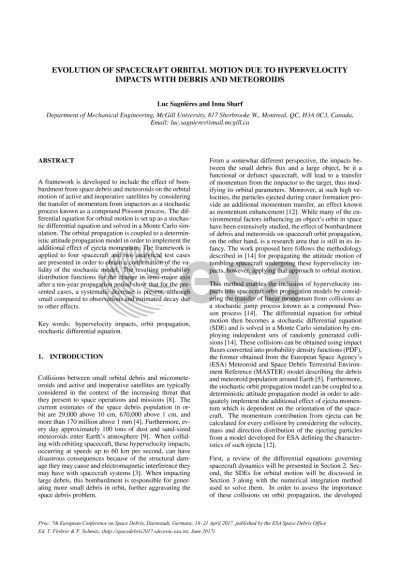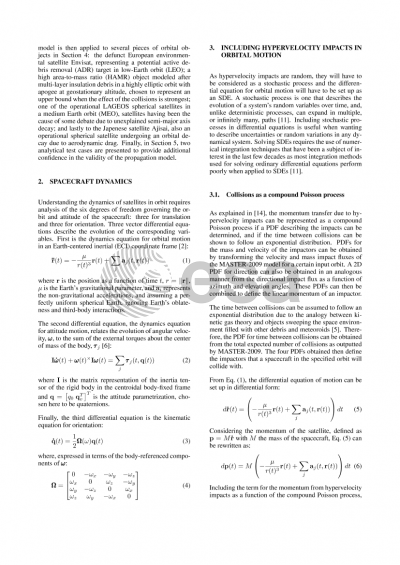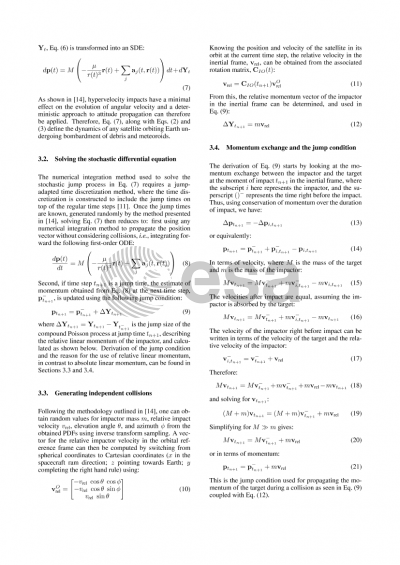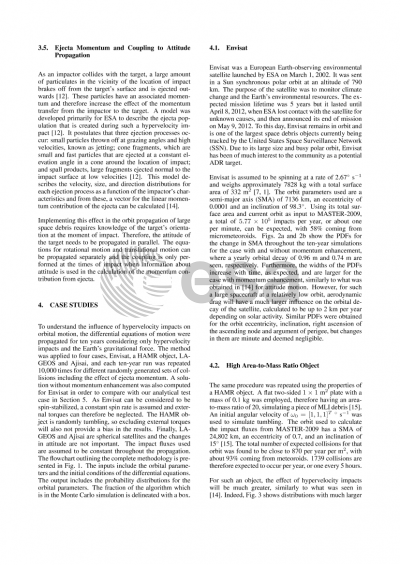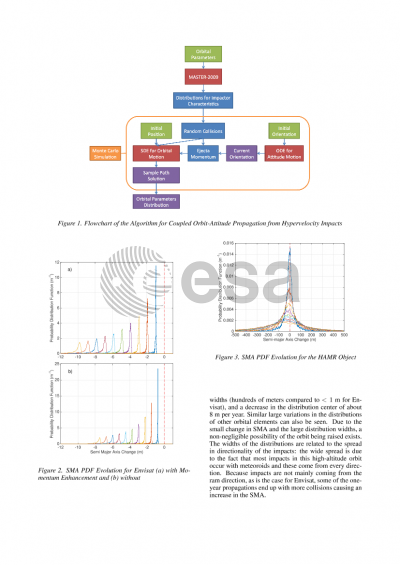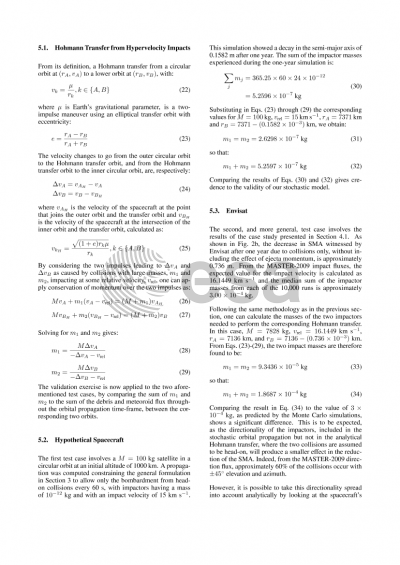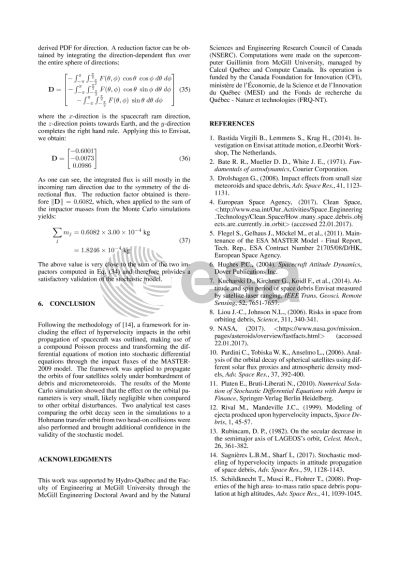Document details

Abstract
Bombardment of small orbital debris and micrometeoroids on active and inoperative satellites is typically considered in the context of the increasing threat that it presents to space operations and missions. These hypervelocity impacts, occurring at speeds up to 60 km per second, can have disastrous consequences for active satellites because of the structural damage they may cause. When impacting large debris, this bombardment is responsible for generating more small debris in orbit, further aggravating the space debris problem. From a somewhat different perspective, the impacts between the small debris flux and a large object, be it a functional or defunct spacecraft, will lead to a transfer of momentum from the impactor to the target, thus modifying its orbital parameters. Moreover, at such high velocities, the particles ejected during crater formation provide an additional momentum transfer, an effect known as momentum enhancement. While many of the environmental factors influencing an object’s orbit in space have been extensively studied, the effect of bombardment of debris and meteoroids on spacecraft orbit propagation, on the other hand, is a research area that is still in its infancy. The work proposed here follows the methodology proposed by Sagnieres and Sharf (2016), however applying to orbital motion.
This method enables the inclusion of hypervelocity impacts into spacecraft orbit propagation models by considering the transfer of linear momentum from collisions as a stochastic jump process known as a compound Poison process. The differential equation for orbital motion then becomes a stochastic differential equation (SDE) and is solved in a Monte Carlo simulation by employing independent sets of randomly generated collisions. These collisions can be obtained using impact fluxes converted into probability density functions (PDF) from the European Space Agency’s (ESA) Meteoroid and Space Debris Terrestrial Environment Reference (MASTER) model describing the debris and meteoroid population around Earth. Furthermore, the stochastic orbit propagation model is coupled to a deterministic attitude propagation model in order to adequately implement the additional effect of ejecta momentum. The momentum contribution from ejecta is calculated for every collision by considering the velocity, mass and direction distribution of the ejecting particles from a model developed for ESA defining the characteristics of such ejecta.
In order to assess the importance of these collisions on orbit propagation, the developed model is applied to several pieces of orbital objects. First to the defunct European environmental satellite Envisat, representing a potential active debris removal (ADR) target in low-Earth orbit (LEO). Second to a high area-to-mass ratio (HAMR) object modeled after multi-layer insulation debris in a highly elliptic orbit with apogee at geostationary altitude. This object was chosen to represent an upper bound when the effect of the collisions is strongest. Third to one of the LAGEOS spherical satellites in a medium Earth orbit (MEO). These satellites have been the cause of some debate due to unexplained semi-major axis decay. Finally, to the Japenese satellite Ajisai, another spherical satellite undergoing an orbital decay due to atmospheric drag. It is shown that for every example a characteristic lowering of the orbit, although small compared to observations, is seen as the most probable case due to impacts coming from the ram direction. Two analytical test cases are presented to provide additional confidence in the validity of the propagation model.
Preview
